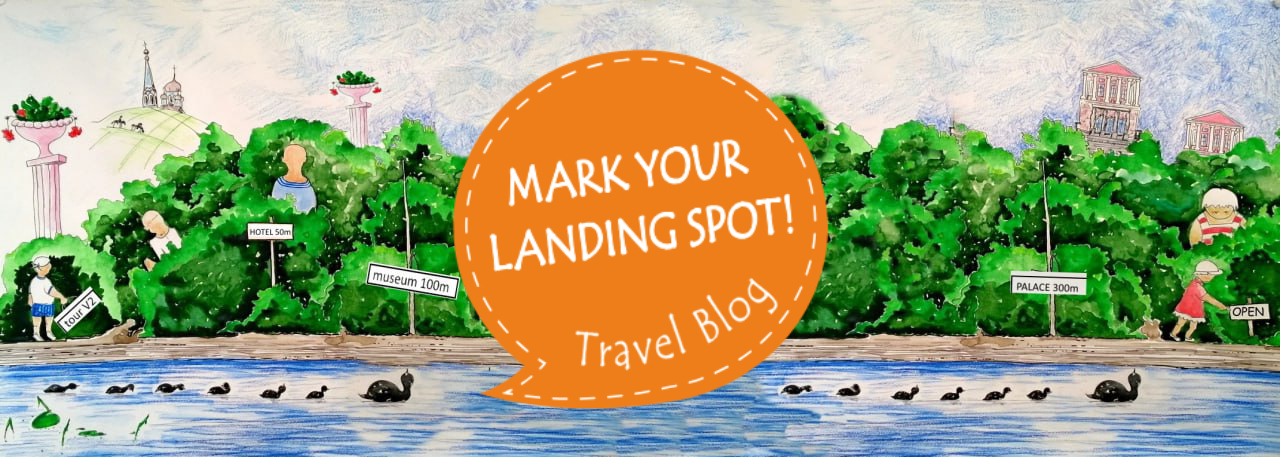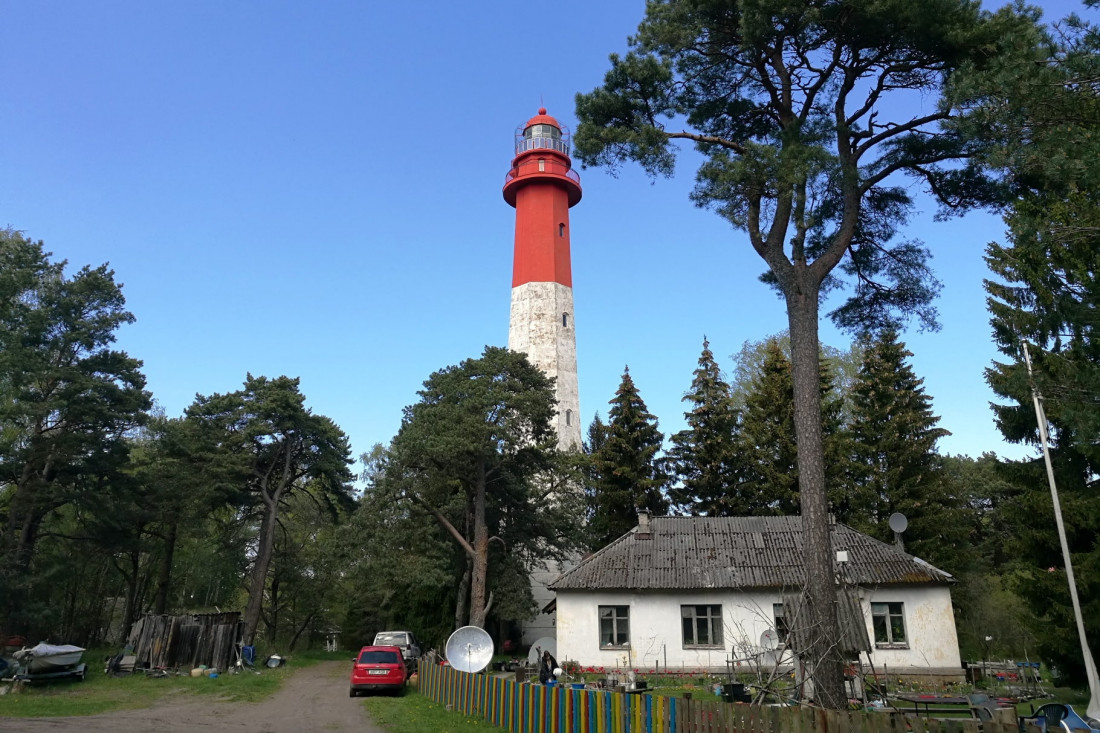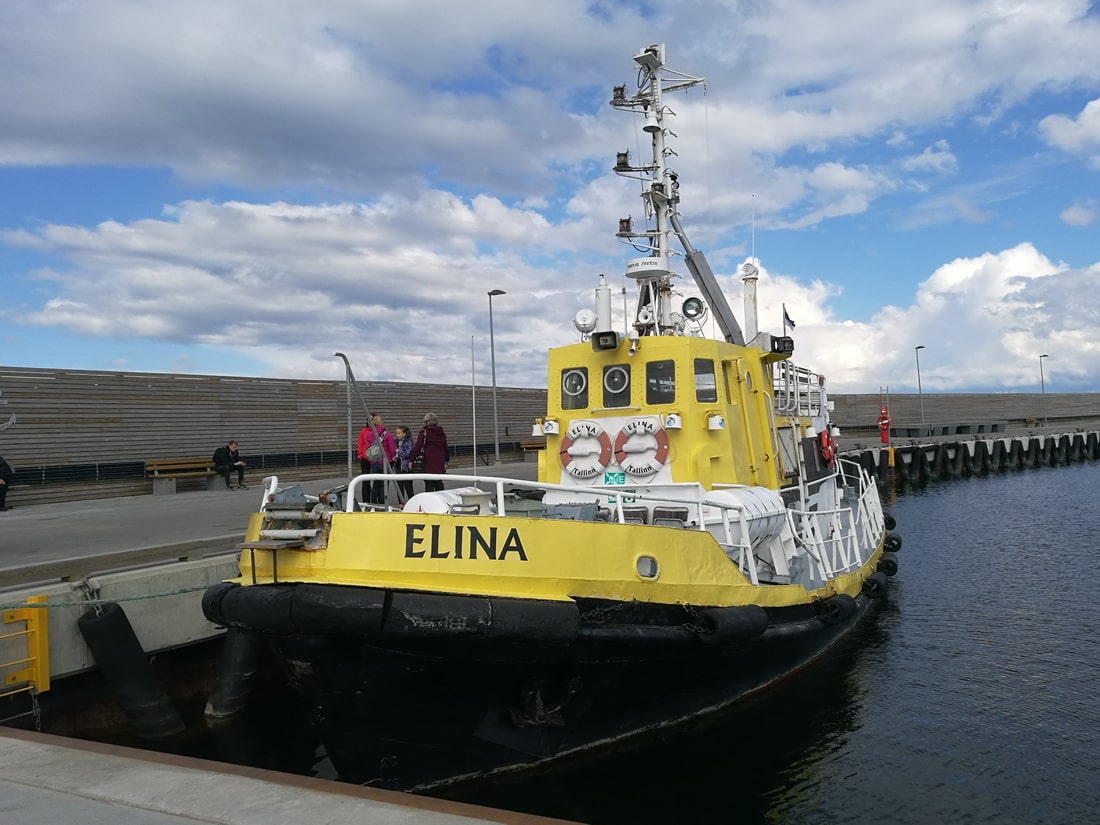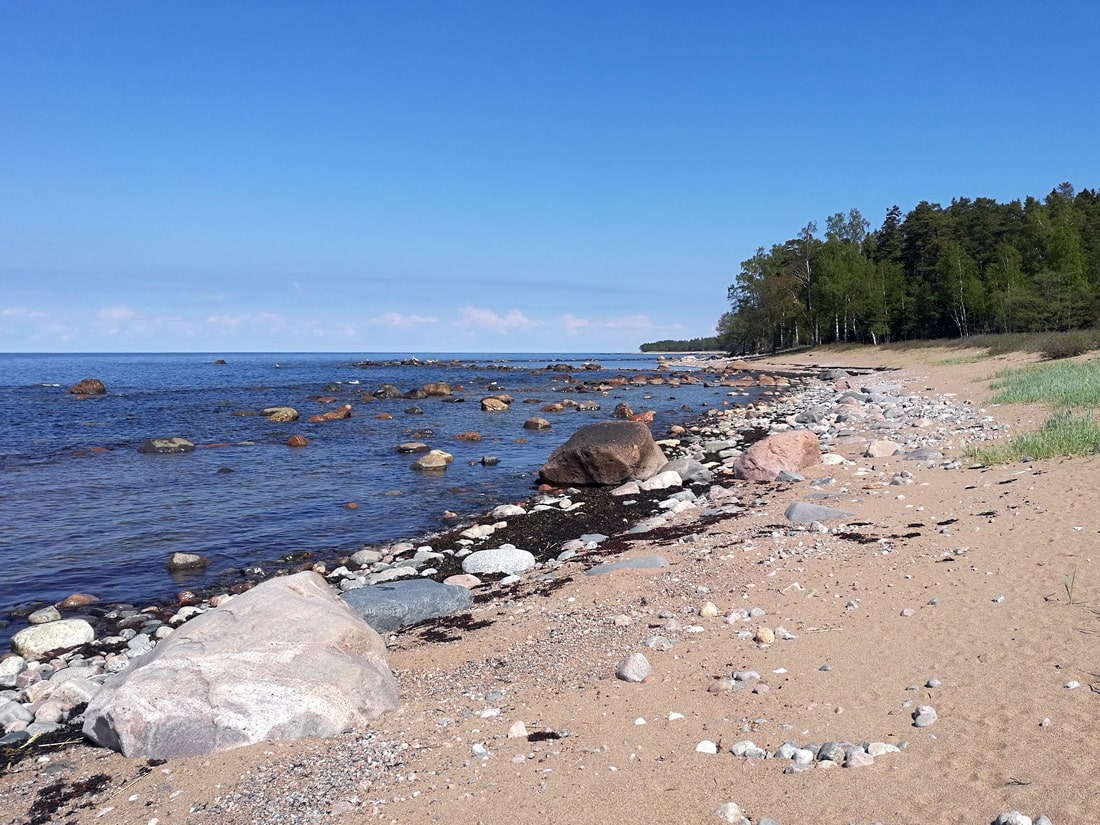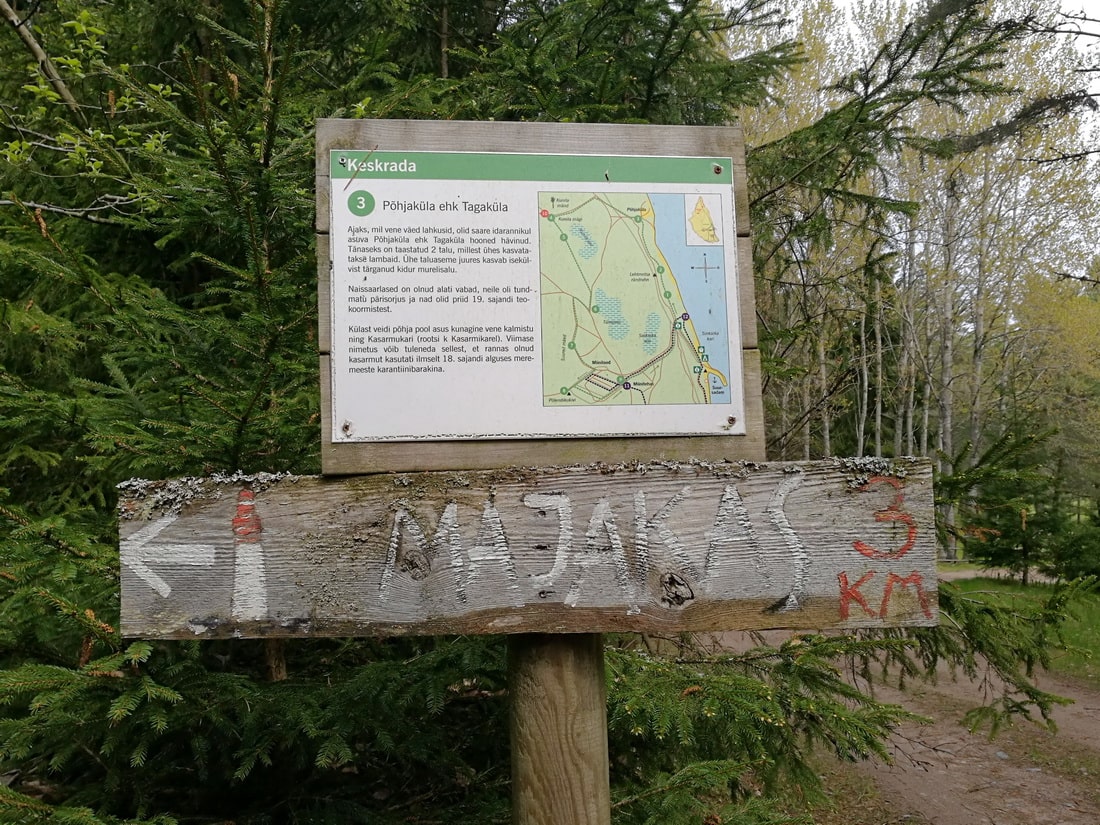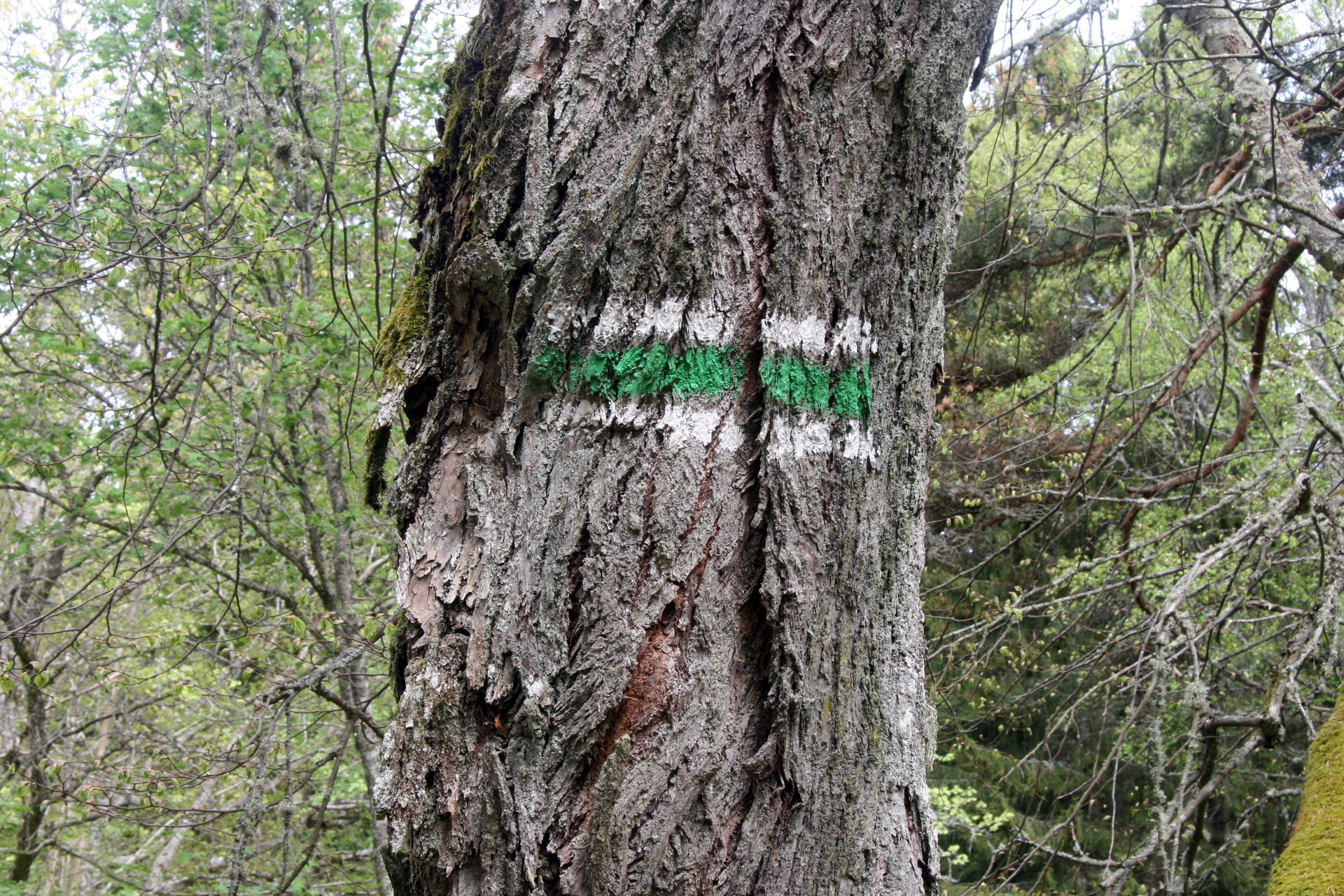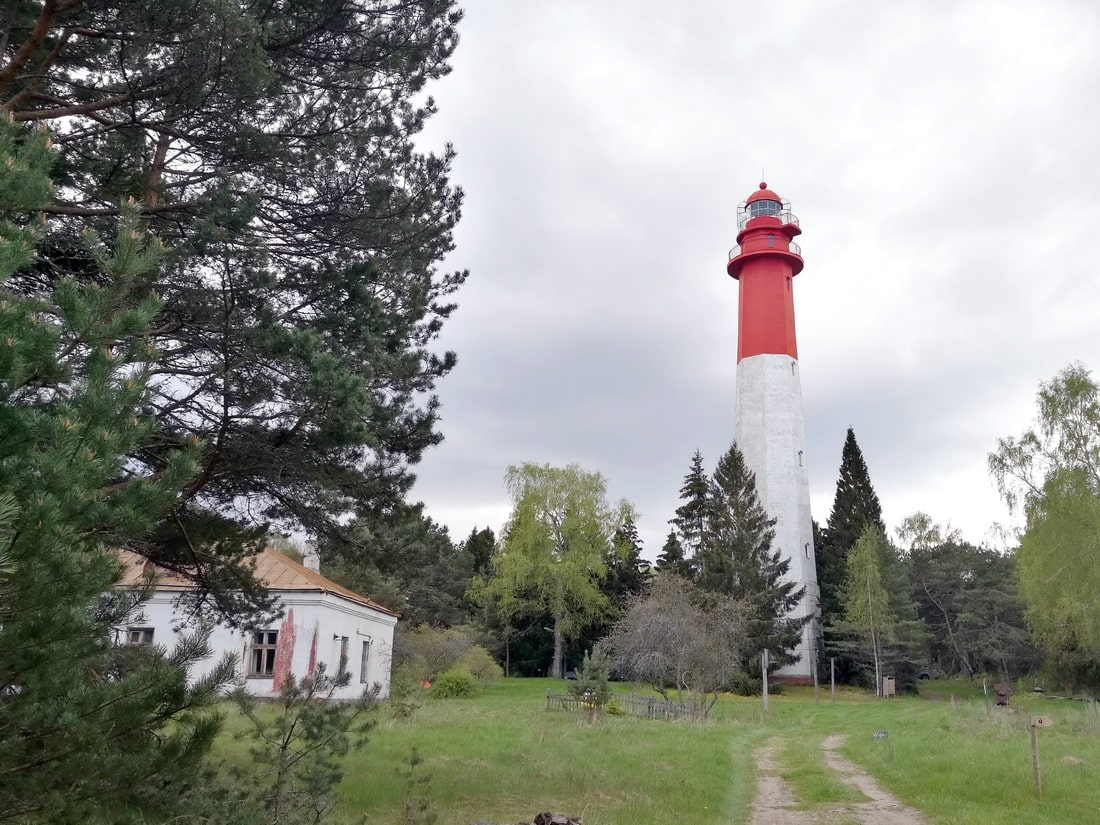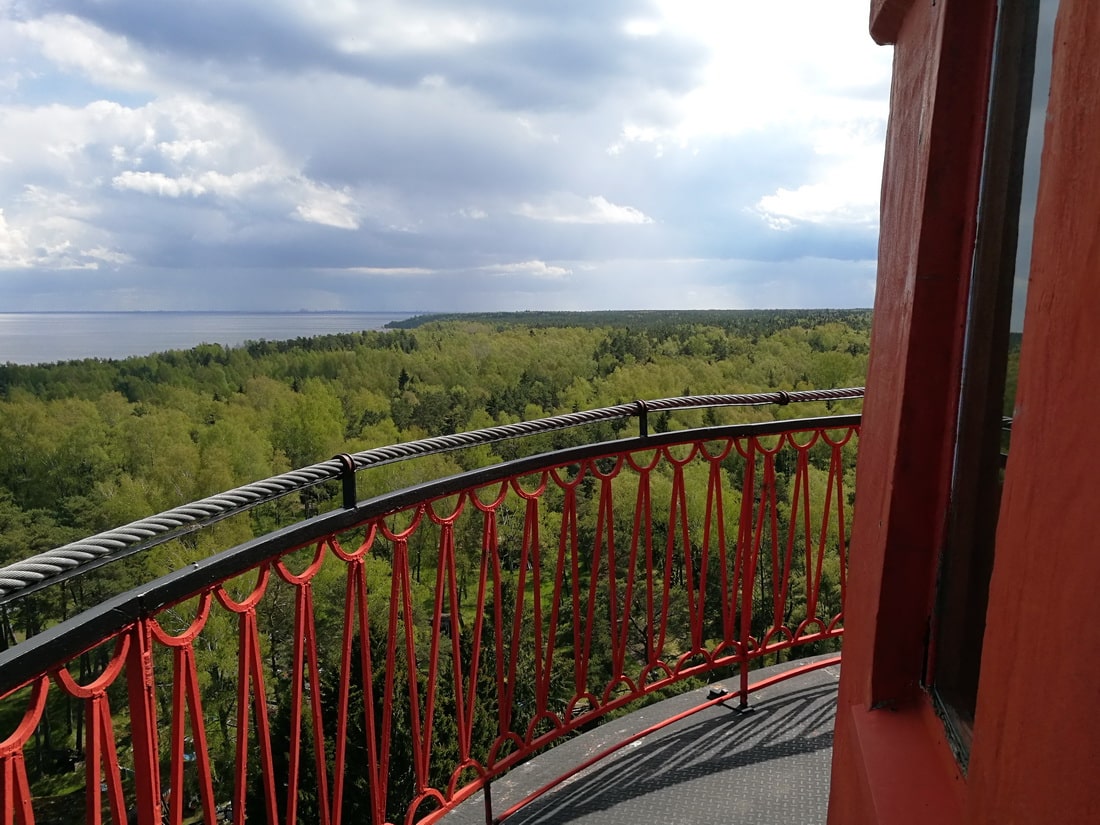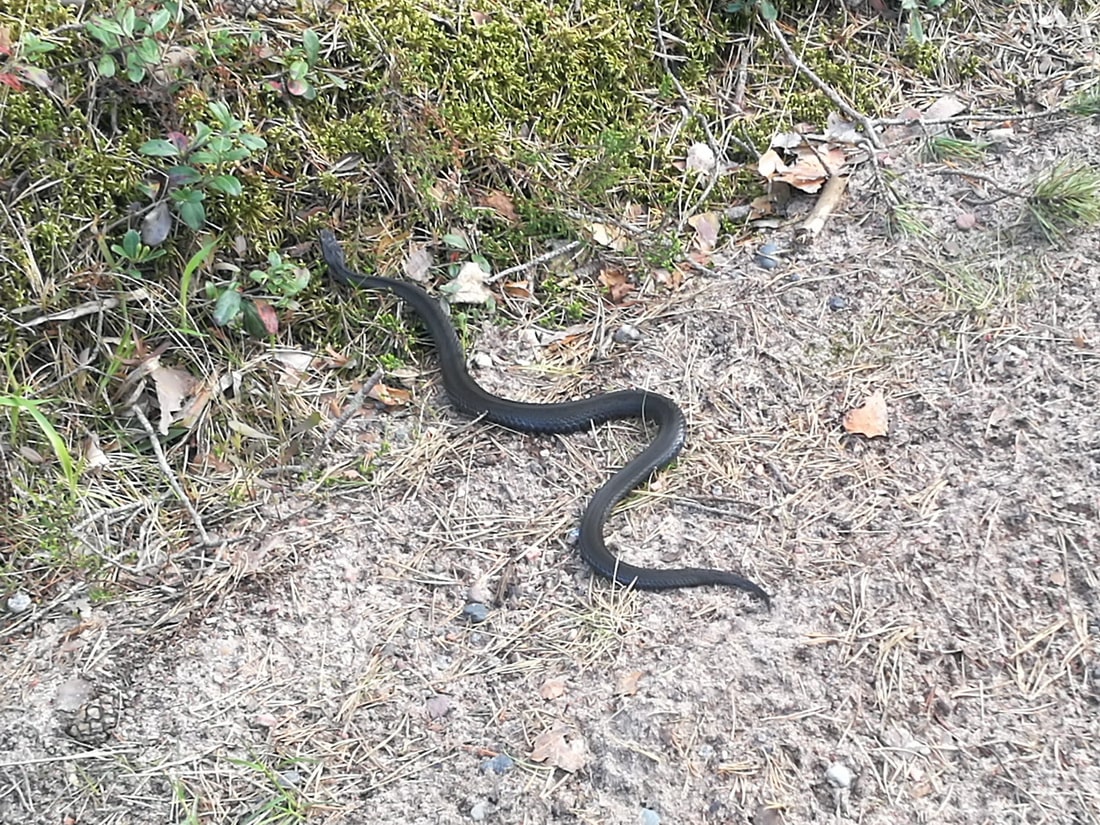I visited Naissaar in late May. It was a magical time—birds were singing, primroses were blooming, and lilies of the valley were just beginning to wake up.
The weather was perfect—a storm bypassed the island. This is important because, in bad weather, the lighthouse is closed, and that was the main attraction I wanted to see.
This was the 10th island in the Baltic Sea that I visited. Naissaar translates from Estonian as “women’s island”.
🗺️ What to Expect on a Naissaar Island Day Trip
- Area: 18 km² (16 times larger than Tallinn’s Old Town)
- Population: 3 permanent residents (plus a few part-timers and plenty of birds)
- Highlights: A lighthouse, sandy beaches, dense forests, abandoned Soviet military sites
🌲 The Forest, the Past, and the Ghosts of the Cold War
Naissaar—literally “Women’s Island”—is almost completely covered by pine and spruce forest. The island’s timber once helped build medieval Tallinn, and traces of its layered past still remain. In the early 1900s, it was home to 400 Estonian Swedes and even had two schools. Then the Soviets came. From 1944 to 1994, the island was closed off and used as a military base. Locals fled or were deported.
Today, the island is a protected nature reserve—peaceful, slightly eerie, and full of surprises. If you’re looking for a quiet break from Tallinn, this Naissaar island day trip is just right: bunkers, blueberries, and Cold War vibes included.
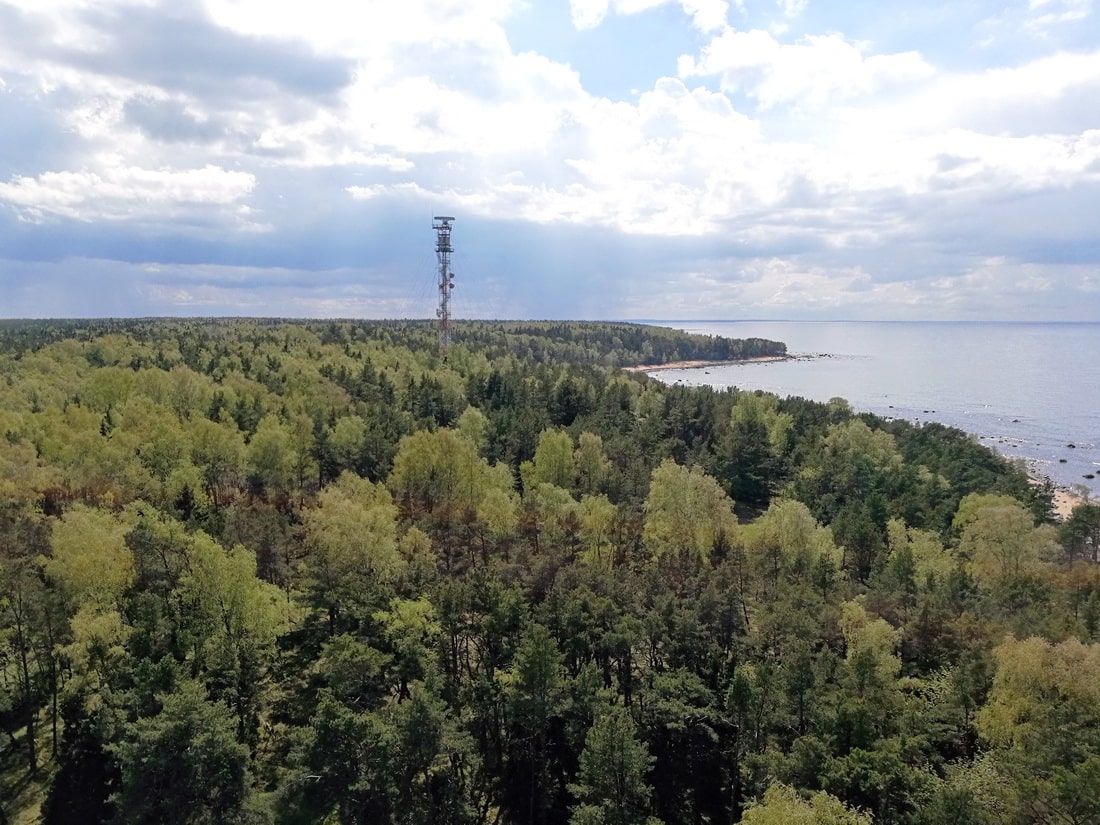
Most of Naissaar is just forest. Quiet, green, slightly mysterious—and full of birds, moss, and blueberries (in season).
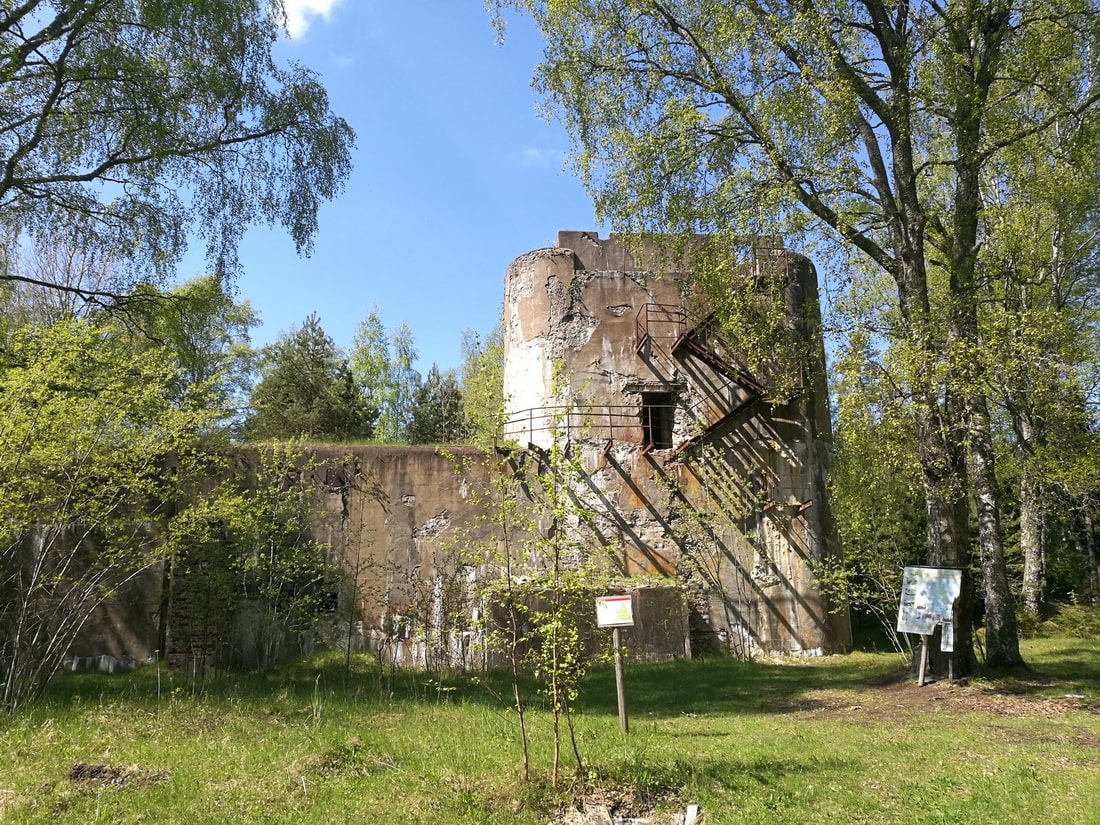
The military trail is the most popular route. It has everything: bunkers, barbed wire, and a strange post-apocalyptic vibe.
🚢 How to Get to Naissaar Island from Tallinn
Ferries run from May to September, and there are two operators:
- Sunlines (departs from Kalasadam in central Tallinn)—approx. 6 hours on the island
- Monica (departs from Pirita district)—gives you 9.5 hours to explore
I used both: took Sunlines to the island and Monica back. You can mix and match if the schedule fits. Just check return times carefully—this is not the kind of place you want to get stranded after dark. Once, I had to wait for wild boars to cross the road. Seriously.
The crossing takes about an hour each way. The distance from Tallinn to Naissaar is roughly 15 km.
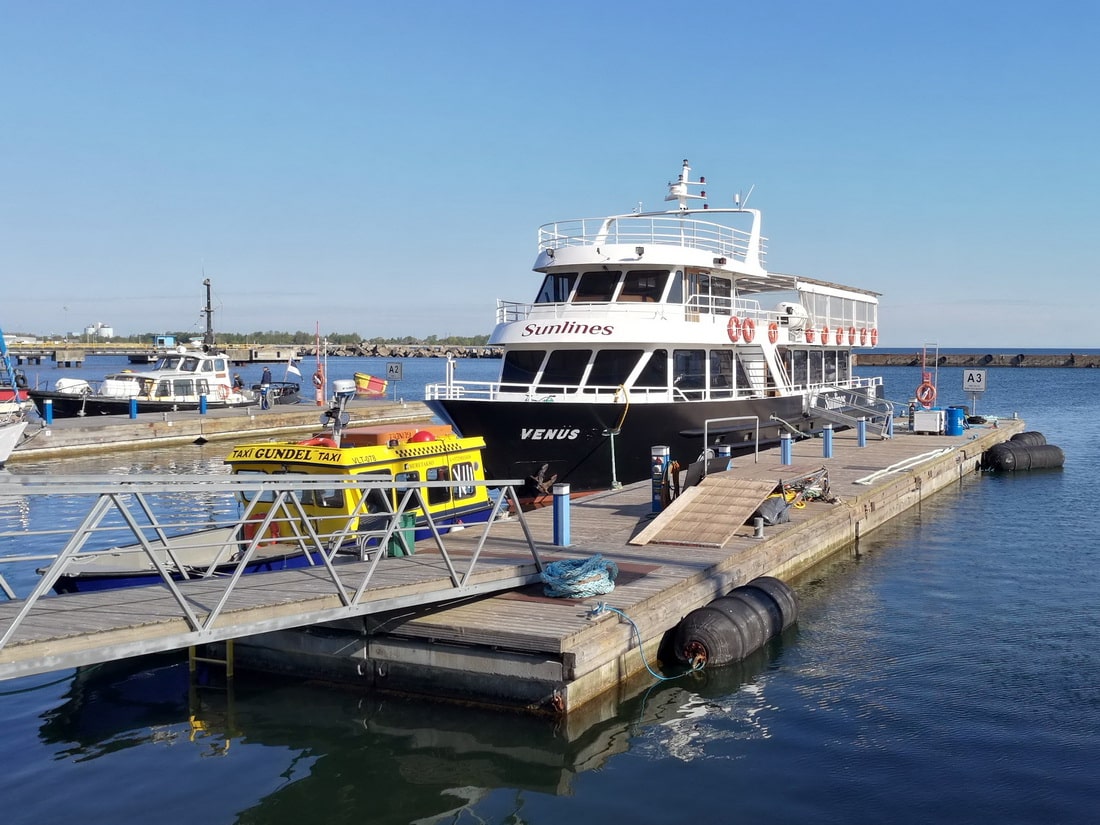
The Sunlines ferry leaves from central Tallinn and takes about an hour, just enough time to rethink your shoe choices.
🏕️ Can You Stay on Naissaar?
Technically, yes. There’s a small recreation centre near the pier and some basic camping areas. But unless you really want to sleep surrounded by forest and foxes, a day trip to Naissaar is enough. I spent 7 hours on this Naissaar island day trip and saw everything I wanted.
🌊 Things to Do on Naissaar Island
1. Sunbathing and Freezing Your Toes
In May, the water was Baltic-cold, so no swimming for me. But the beaches? Gorgeous. The closest one is just a few steps to the right of the pier. There’s a campsite with toilets, picnic tables, and a bit of shade.
The best beach is at Hülkari (Seal Reef), about 1.5 km to the left along the blue trail. Fair warning: walking on sand takes longer than you think, and there’s not always a clear grassy path along the shore.
Also: don’t dive. Rocks. Enough said.
2. Hiking Naissaar’s Marked Trails
Naissaar has three official hiking trails, all marked with colours and maps:
- Red Military Trail (10 km)—Soviet ruins galore: missile fuel storage, artillery batteries, an officers’ casino.
- Green Middle Trail (11 km)—Pine-covered dunes and natural landscapes. Starts at the pier.
- Blue Southern Trail (13 km)—A bit of both: bunkers, bogs, beaches, and spruce forest. Also starts and ends near the pier.
3. Visiting the Lighthouse
The lighthouse on Naissaar isn’t ancient—it’s a 1960s rebuild—but it’s tall (45 metres), very photogenic, and offers panoramic views of the island. On a clear day, you can even spot Helsinki.
Admission is €5. There’s no schedule posted, but it closes in bad weather. If you don’t see anyone, try knocking on the nearby house—that’s where the lighthouse keeper lives. Yes, seriously.
It’s about 7 km from the pier. You can ride the island’s narrow-gauge train partway—it runs between the harbour and the village of Männiku.
4. Mushrooms, Blueberries & (Non-lethal) Snakes
The forest is magical. In July, blueberries cover the ground. Later come the mushrooms—boletes, aspen mushrooms, and over 460 species of fungi.
I wasn’t so lucky in May—no berries yet, but I did meet a curious snake. Probably a viper, but it slithered off before we had time to get properly acquainted.
Tip: For most walks, sandals or sneakers are perfectly fine—just stick to the paths. Only if you’re one of those rare off-trail explorers, consider boots or rubber shoes instead.
5. Taking a Guided Tour (Zero Hiking Required)
If walking isn’t your thing, you can join a guided tour by military truck. It covers all major sights and includes audio guides. Book it when buying your ferry ticket. Tours cost from €15 and last about 3.5 hours.
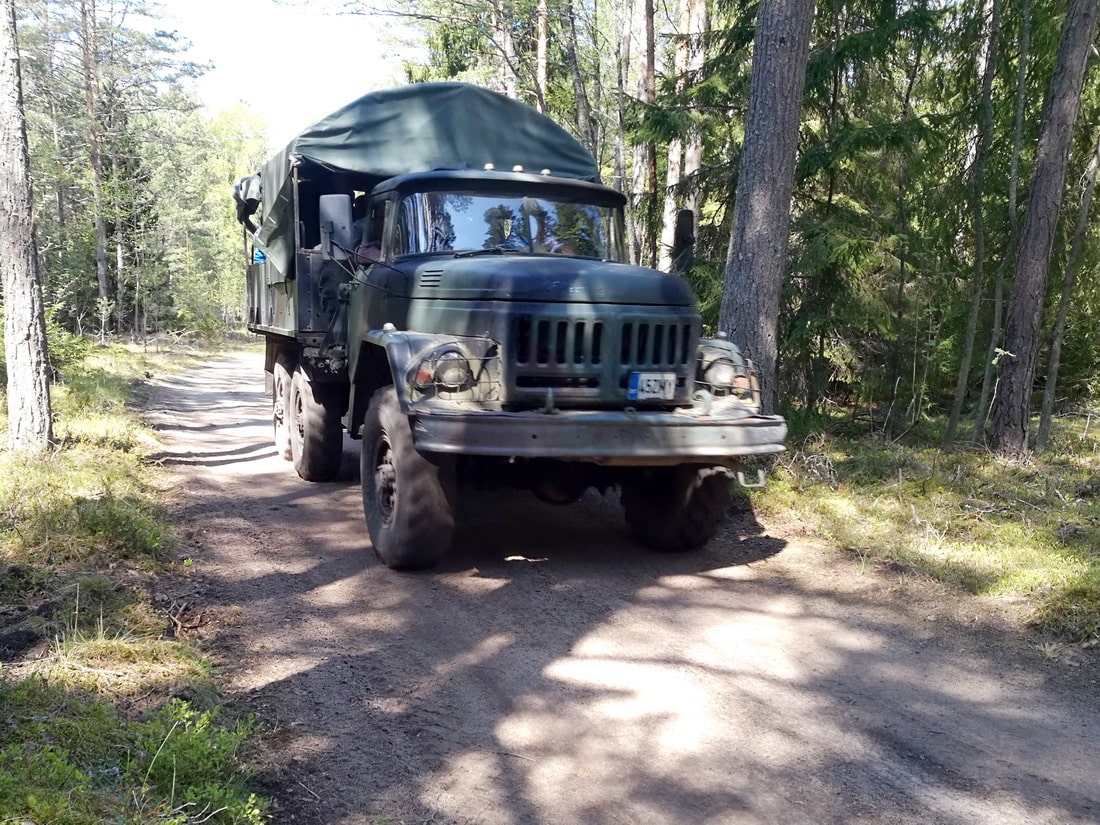
You can explore the whole island in this Soviet-era truck. Surprisingly comfortable—if you like rattling.
🧭 Plan Smart, Pack Right
The tiny harbour has a café, bike rentals, toilets, and bins—but no shops. Bring snacks and water. Mobile signal is good in most areas, but near the north shore, it may switch to a Finnish network.
Footwear matters: for the beach and trails, sandals or sneakers are enough. But if you’re venturing off-trail into thicker forest, wear boots or rubber shoes. Vipers are rare and shy—but they’re out there.
Final Thoughts
I’m a fan of islands — especially the small northern ones where nothing much happens. This Naissaar island day trip added one more to the list. It wasn’t dramatic. But there was a lighthouse, an old Soviet truck, a snake, and a lot of walking. Which, honestly, is exactly what I came for.
Like this kind of offbeat escape? See Prangli Island → or explore the full Tallinn travel guide →.
